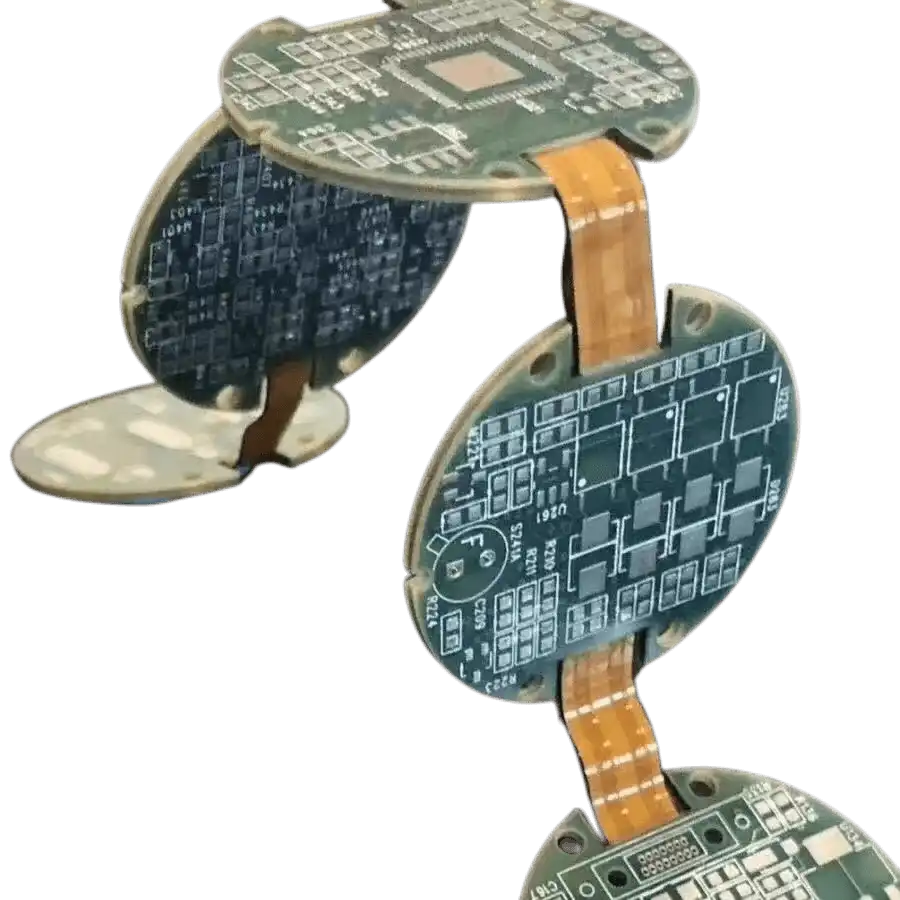
In the dynamic world of electronics and technology, rigid-flex PCBs have emerged as a groundbreaking solution that combines the benefits of rigid and flexible PCB designs. As a leading player in the PCB manufacturing industry, the realm of rigid-flex PCBs offers a realm of possibilities that cater to diverse applications across various industries. This comprehensive article delves into the intricate world of rigid-flex PCB manufacturing, uncovering the complete spectrum of material options available and the advantages they bring to the table.

Exploring the Material Excellence of Rigid-Flex PCBs
Rigid-flex PCBs represent an innovative approach to electronic circuit design, merging the strengths of rigid and flexible materials into a single solution. The selection of materials plays a crucial role in achieving the desired performance, durability, and functionality of rigid-flex PCBs. Let’s explore the full range of material options and their remarkable attributes.
The rigid sections of a rigid-flex PCB often employ traditional FR-4 materials or high-performance variants. FR-4 is a composite material that offers excellent electrical insulation, mechanical strength, and ease of fabrication. For more demanding applications, advanced laminates with enhanced thermal properties, improved dielectric constants, and higher glass transition temperatures (Tg) are available. These materials ensure stability and reliability in the rigid sections of the PCB.
The flexible layers of rigid-flex PCBs are typically constructed using polyimide, a high-performance polymer known for its exceptional flexibility, heat resistance, and dielectric properties. Polyimide materials enable the PCB to bend, fold, and conform to intricate shapes without compromising electrical performance. This flexibility makes them suitable for applications where space constraints or design complexity are considerations.
The bonding layers in rigid-flex PCBs play a critical role in adhering the rigid and flexible portions together. Specialized adhesive materials are used to ensure a strong and reliable bond that withstands mechanical stress, temperature variations, and environmental factors. These adhesive materials contribute to the overall structural integrity of the PCB while maintaining electrical isolation between different layers.
Advantages of a Full Range of Material Options in Rigid-Flex PCBs
The availability of a diverse range of materials empowers designers to create rigid-flex PCBs that are tailored to the specific requirements of their applications. Whether it’s a high-frequency wireless communication module or a compact medical device, the right material combination can be chosen to optimize performance, reliability, and form factor.
Rigid-flex PCBs find applications in environments where conventional rigid PCBs or flexible circuits might fail. The use of high-quality materials ensures that the PCB can withstand harsh conditions such as vibrations, temperature fluctuations, and exposure to chemicals. This enhanced reliability makes them suitable for industries like aerospace, automotive, and industrial automation.
Rigid-flex PCBs are known for their ability to save space and reduce the need for connectors and cables. By utilizing flexible materials, intricate designs, and compact form factors can be achieved. This is particularly beneficial in portable devices, wearables, and electronic products with limited space.
The integration of rigid and flexible sections within a single PCB reduces the need for additional connectors and interconnecting cables. This simplifies the assembly process, reduces the risk of connection failures, and improves overall system reliability. Fewer components also contribute to cost savings.
The careful selection of materials, including dielectric constants and loss tangents, contributes to maintaining signal integrity across the rigid and flexible sections of the PCB. This is vital for applications where signal quality and data integrity are critical, such as high-speed data communication and RF systems.
Applications of Rigid-Flex PCBs
Rigid-flex PCBs are commonly used in consumer electronics such as smartphones, tablets, and wearables. They enable the creation of compact and lightweight devices that can withstand the rigors of daily use.
Medical electronics often require flexible and durable PCB solutions. Rigid-flex PCBs find applications in medical devices like implantable devices, diagnostic equipment, and wearable health monitors.
In aerospace and defense applications, where reliability and ruggedness are essential, rigid-flex PCBs are used in avionics, communication systems, and military equipment.
The automotive industry benefits from the space-saving nature of rigid-flex PCBs. They are used in vehicle control systems, infotainment systems, and advanced driver assistance systems (ADAS).
Industrial automation relies on PCBs that can handle harsh conditions and demanding environments. Rigid-flex PCBs are used in robotics, control systems, and sensors.
Conclusion
Rigid-flex PCB manufacturing introduces a new realm of possibilities for electronic design, bridging the gap between rigid and flexible PCB technologies. The choice of materials plays a pivotal role in achieving the desired performance, reliability, and functionality in these complex PCBs. With a full range of material options, designers and engineers can tailor rigid-flex PCBs to meet the unique needs of diverse applications across various industries. The advantages of design flexibility, enhanced reliability, and space optimization make rigid-flex PCBs a key enabler of technological innovation, shaping the future of electronics and ushering in a new era of advanced electronic devices and systems.